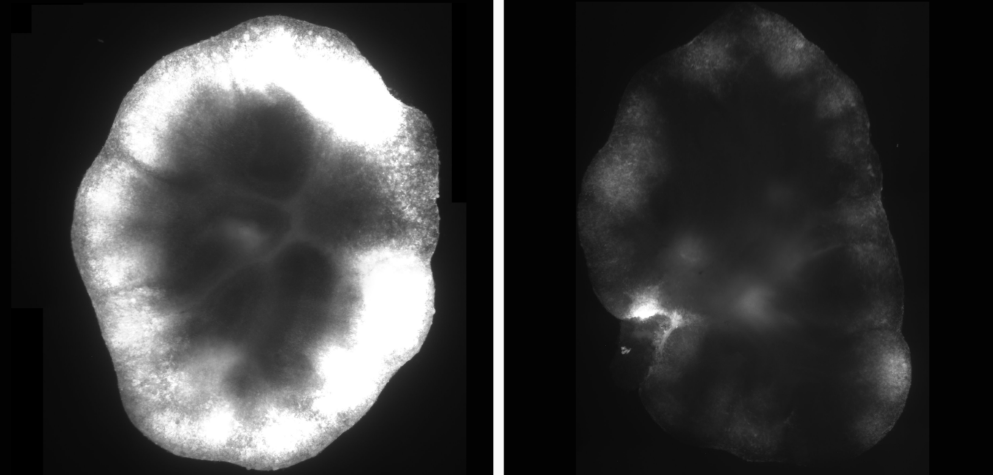News on the VIRIMI team (Viral Infection, Metabolism and Immunity) of CIRI. Communication by the CNRS Foundation on April 14, 2022.
From their windows, Pierre-Olivier Vidalain, Director of Research at the CNRS, and his colleagues in the VIRIMI team led by Vincent Lotteau have a bird’s eye view of the P4 Jean Mérieux. This is the only level 4 public laboratory in France that can handle highly pathogenic viruses such as the Ebola virus. “Lyon is an important city for the study of viruses and theCentre International de Recherche en Infectiologie (CIRI) is a major player in this field,” explains Pierre-Olivier Vidalain. Located at the confluence of the Rhône and Saône rivers, the CIRI is a joint unit of Inserm, the University of Lyon 1, the CNRS and the ENS of Lyon, which houses 24 research teams in virology, bacteriology and immunology.
CNRS Foundation support to VIRIMI team
The VIRIMI team (for “Viral Infections, Metabolism and Immunity”) has been supported by the CNRS Foundation for two years. This team is interested in how viruses hijack the metabolism of the cells they infect to meet their needs for energy and molecular building blocks essential for their multiplication. This hacking orchestrated by viruses can deprive the cell of molecules essential to its survival or, on the contrary, activate certain metabolic functions, thus leading to an “overheating” of the cellular machinery. Moreover, these malfunctions can be perceived by the cell as stress and trigger the activation of an immune response that favors the elimination of the virus. Nevertheless, this response can become harmful for the patient when it is excessive and uncontrolled or when it lasts over time. These links between viral infection, cellular metabolism and immune response are at the heart of the VIRIMI team’s work.
First, the team’s scientists are studying the mechanisms by which viruses hijack cellular metabolism and the consequences on the antiviral immune response. Drug molecules are then used to act on the metabolism in order to stimulate antiviral defenses and make the cells resistant to the viruses. Unlike the majority of current antivirals, these innovative molecules act on the cell’s ability to resist the virus rather than targeting the virus itself. The target is threefold: to stop the infection, to limit its deleterious consequences on the organism and to obtain broad-spectrum treatments effective against several viruses of the same family.

The VIRIMI team targets respiratory viruses such as influenza, SARS-CoV-2 or the highly pathogenic Nipah virus in collaboration with the NITROVIRE team led by Cyrille Mathieu, a researcher at the CNRS, and Mustapha Si-Tahar, who heads the Centre d’Étude des Pathologies Respiratoires (CEPR) in Tours. The Nipah virus, present in South-East Asian bats, regularly infects humans and causes encephalitis and haemorrhage, which are often fatal. As such, it represents a threat and is closely monitored. One of the team’s projects supported by the CNRS Foundation aims to develop a molecule against this virus by targeting the cell’s energy metabolism. The results obtained recently are particularly promising and the team is looking for funding to continue this work (see illustration). Another part of the team focuses on the study of viruses that infect the liver and are responsible for hepatitis B, C and delta. These viruses, by modifying the metabolism of the liver, promote the accumulation of lipids and thus the development of steatosis and cirrhosis, a major risk factor for liver cancer. There are treatments capable of eliminating the hepatitis C virus as well as a protective vaccine and effective molecules to control the hepatitis B virus. However, there is no satisfactory therapeutic solution for the hepatitis delta virus. To meet this need, the team is studying molecules that modify liver metabolism and stimulate antiviral immunity. The objective is to block the replication of this virus but also to prevent the development of cirrhosis and liver cancer.
For several months, the team has been focusing on the study of a new molecule that blocks the spread of the hepatitis delta virus by an original mechanism. This project is conducted in collaboration with two other teams under the direction of David Durantel (HepVir Team, CIRI) and Yves Janin, CNRS Research Director and chemist at the National Museum of Natural History. This consortium hopes to bring this molecule into the clinic within two years via the creation of a start-up and has already received support from Inserm-Transfert and the SATT (Société d’Accélération du Transfert de Technologies) Pulsalys.
In this context, the CNRS Foundation is important in several respects. It provides flexibility and reactivity thanks to a source of funding that allows preliminary experiments to be carried out to test hypotheses and initiate new projects. Without this support, these projects would not have been possible. Furthermore, the funding of research by the CNRS Foundation allows us to establish a privileged relationship with donors. It is an opportunity for the team to explain its work and to respond to the donors’ wish to have direct contact with the researchers they support.






